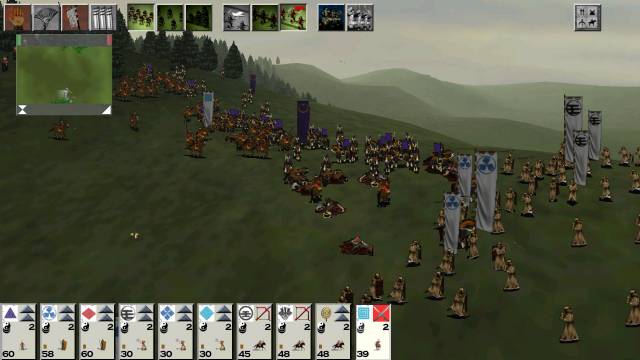Where everything started
A Total War law and mind runs fast at Creative Assembly and, consequently, at SEGA, publisher and shoulder of the strategic time, but it has not always been the case. A brief review: Creative Assembly was founded in 1987 in Horsham, England, founded by Tim Ansell and after a period of incubation in porting – including Shadow of the Beast – the software house enters the orbit of Electronic Arts, specializing in “second-tier” sportsmen such as Rugby World Cup and Cricket World Cup .
The first year of breakthrough is 1996, when Michael Simpson, first creative designer of Total War , joined the team next to Ansell, the second is 1999, when the software house gets more funds and awards from Electronic Arts to design an unprecedented strategy series. Here begins the story of Total War , with the founder Shogun: Total War , the first real high-risk project of Creative Assembly.
There is no need to explain what Shogun is: Total War, but perhaps it should be explained what it was when it arrived on the shelves in June 2000, after a rather troubled development between the obsolete 2D engines and the advancement of new three-engine engines.
The title was initially imagined as a “classic” RTS, made up of real-time battles, but Simpson soon noticed the short breath they had and decided to include the turn-by-turn, the glue that he needed to keep together the various clashes: this formula was born that would become the trademark for the series.
The real added value was the arrival in the Team of Stephen Turnbull, a scholar of military history who co-auditioned the work, making historical reconstruction one of the most characteristic and most appreciated features of Total War, element that was (momentarily) abandoned only last year with the arrival of Total War: Warhammer .
Shogun: Total War put in place the real historical-cultural context of Japan between the fifteenth and seventeenth centuries, in what is termed the Sengoku period, a videobudic idea diametrically opposed to the already famous StarCraft and Command & Conquer , but also very far from the vague and general story of the two Age of Empires .
The title was immediately a success and was welcomed by the public – in terms of sales – and criticism, so much to deserve prizes and nominations as one of the best games of the year and received within a year the expansionMongol Invasion. The Star of Total War was just born and it was already beginning to rise.
The final consecration
In the same year, the streets of Creative Assembly and Electronic Arts separated, with the former, strong in the success of their work on their second project, not a sequel to Shogun: Total War , but a title that, resuming the formula tested game, explored other horizons, identified by the team in those of Medieval Europe, in a span of time – so far unbeaten throughout the series – from the XI to the XV century. The game in question you know it well, it’s Crusader: Total War .
No, no mistake, this was in the beginning the name for the future Medieval: Total War– finally released in 2002 – that assumed its real appearances only after several reflections by de Plater, Taglione and Simpson, unsatisfied with the first choice that did not reflect well the geography and the time span of the title.
The decision about the environment was, however, much simpler, because the team’s desire was to include assaults on the walls, siege to cities and the most widespread battlefields, in short, all that a typical battle of 1300 offered.
The many improvements to the stage in real time allowed Medieval: Total War to beat his predecessor and the product was for the long weeks the most sold title on British soil; like Shogun , also Medieval: Total Warwas enlarged with an extra body, Medieval: Total War – Viking Invasion , set a couple of centuries earlier than the base title, amid the invasions of the northern peoples.
The final consecration took place in 2004, with the arrival of Rome: Total War , a title that sanctioned the initiation of the winning association between Creative Assembly and the Japanese publisher SEGA, researching those years of a relaunch on European soil, though Initially Rome: Total War was released Activision, who lost title rights in the following months.
SEGA’s choice was winning because, to date, the title remains one of the milestones among the strategic and is the Total Warwith the highest metacritic (92/100), thanks to the introduction of a dynamic map even during shifts, a historic reconstruction that included the most famous battles of the Republican Rome period and especially thanks to an innovative graphic engine and redesigned from scratch that, curiosity, was also adopted by History Channel for his documentary called Decisive Battle and BBC Two, under the Time Commanders program.
The success of Rome: Total Warwon numerous awards for the title and team, including Jeff van Dyck, who composed the soundtrack and became one of the pillars for the saga’s future. Rome: Total Warwas the turning point not only for the new qualitative peaks, but also because it was the first title of the series to open the doors to the modder community, which still today, over ten years away, are tired of creating new content for the work.

